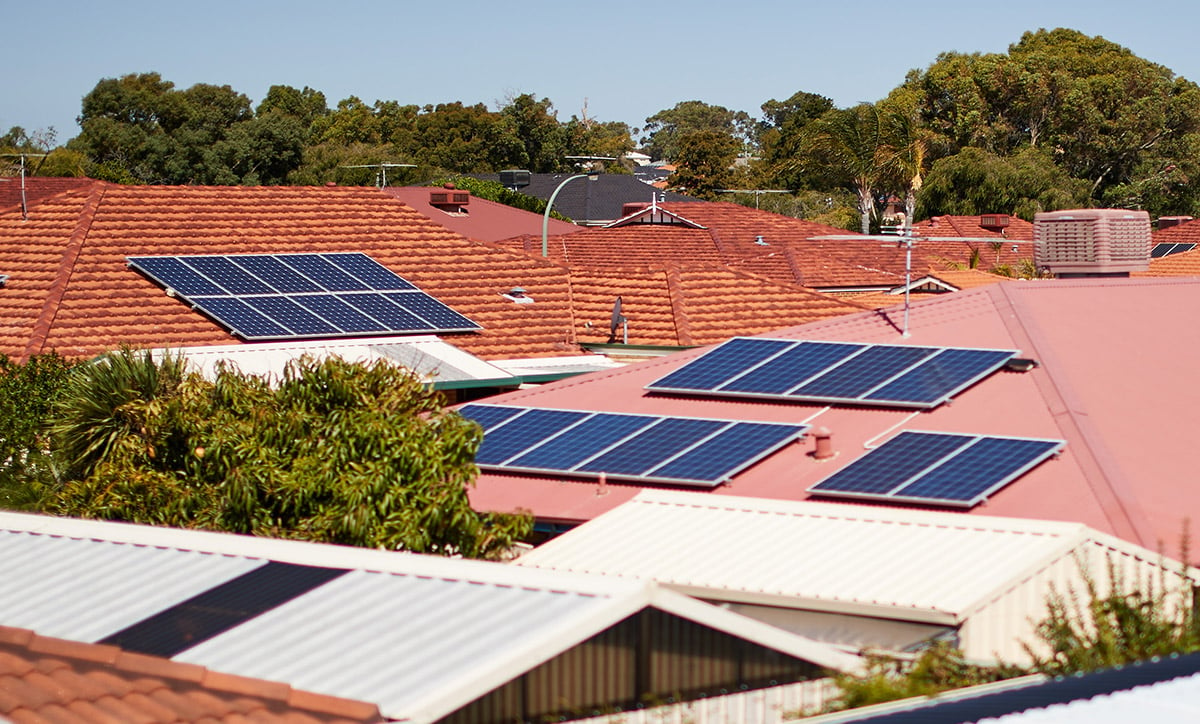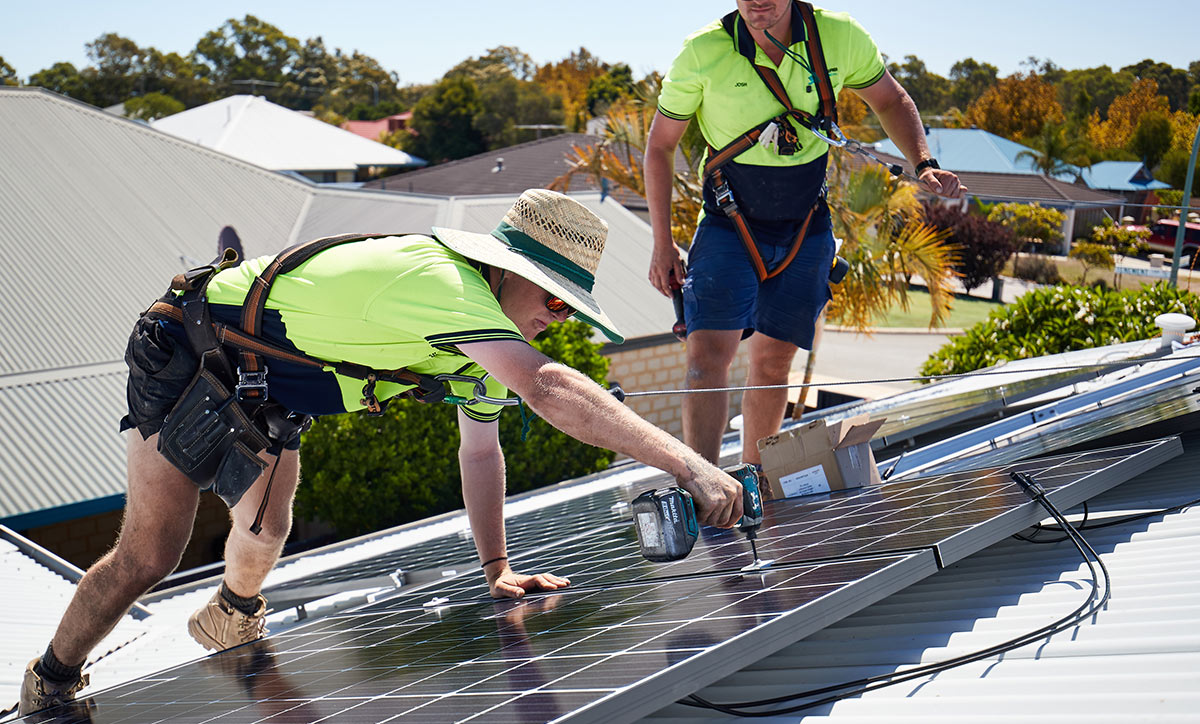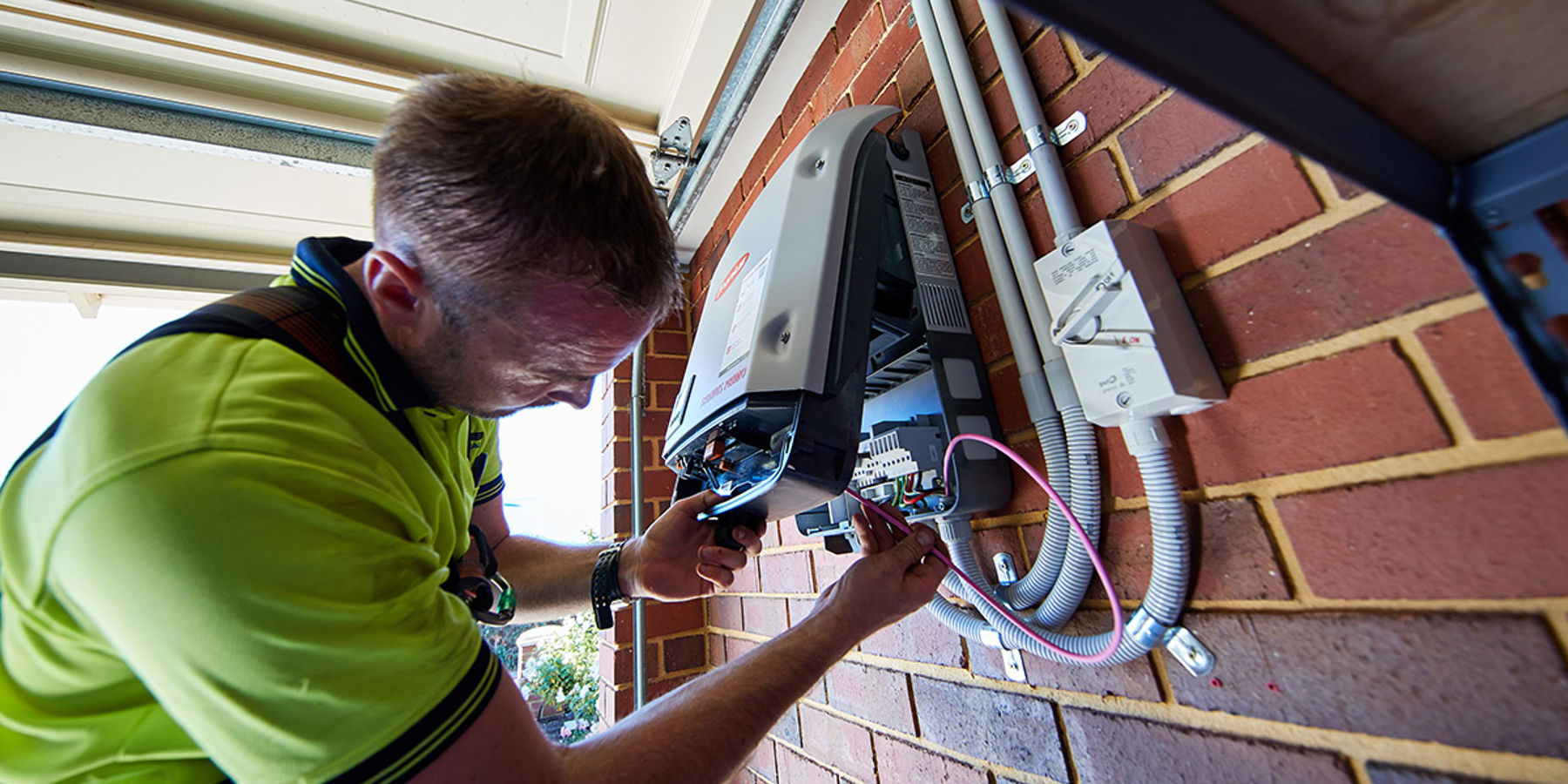How do you get the solar on your rooftop and inverter safely connected to the grid?
Nearly one in three homes in WA have panels on their rooftop.
Despite that, there still can be confusion around the process of getting solar installed and connected to the grid and the reasons why, sometimes, you can’t have as much solar as you want.
Here’s our cheat sheet outlining what and who is involved in the process and the role they play.

The process and people involved in your solar:
1. The customer - you
You are the first step in the process. You’ve decided to put solar on your rooftop. Good call.
It’s important to understand that this decision changes your status, from being just a user of power to a user AND a generator.
The power you generate on your rooftop will impact not just your home, but your entire street, as your solar connection sends unused power back into the grid.
Your first consideration is how many solar panels your household needs and what they will cost. Keep in mind that most homes consume a total of 5 to 15 units of electricity a day – including at night-time when the sun doesn’t shine.
A solar supplier can help you work out how many panels you might need and advise on a good quality inverter. There are a lot of suppliers out there – check out our tips for finding a good provider and installer.
We recommend getting quotes from at least three providers.
2. Supplier / installer
Part of what a supplier will do is assess and recommend the number of panels for your home, depending on your energy needs.
If you have overhead power, getting a voltage rise assessment done by an electrical contractor before you put in your application is our top tip to reducing any potential delays on approvals.
Running this upfront may save you time as, if your solar connection can only manage 5kVA, your supplier will only apply for 5kVA.
You or your installer will need to apply to your retailer first, then apply to us.

3. The retailer
The energy retailer, typically Synergy, is responsible for your billing and metering.
When you or your installer contact the retailer, they will give you a Retailer Reference Number (RRN) to provide to us to ensure you get the right approvals to put the solar on your rooftop. If you have a shared connection such as strata, commercial property or apartment, your application will also need a technical assessment and may take a little longer.
If you're eligible and have signed up for their buyback scheme, you will receive credit for power that your solar connection sends back to the grid once your solar is installed.
4. Western Power
When you put solar on your roof you become an energy generator, so instead of power flowing one way from the grid to your house, it now flows both ways.
That means your solar connection has the ability to affect power quality not just at your house, but to anyone else on your local grid, particularly as solar power tends to fluctuate.
In the course of getting a solar system, you or your installer must apply to us. When your connection application is received, we assess the potential impact of the size of your proposed solar connection on power in your street and the local grid.
There are several reasons why an application may not be approved at first, however you will be told how to address the required criteria before re-applying. If your application goes for further review, it’s generally because
- the installer has not provided the correct paperwork
- further assessment is needed to establish whether there is enough spare capacity to connect your solar safely to the grid.
85% of applications are approved within 24 hours. 15% require review which can take up to 15 business days - of these 70% are approved.
If you have overhead power, getting a voltage rise assessment done by an electrical contractor before you put in your application is our top tip to reducing any potential delays on approvals.
Most frequent reasons for declining a connection:
- The system exceeds the capacity of the overhead service cable
- The system exceeds the capacity of the connection service
- Invalid diagrams
